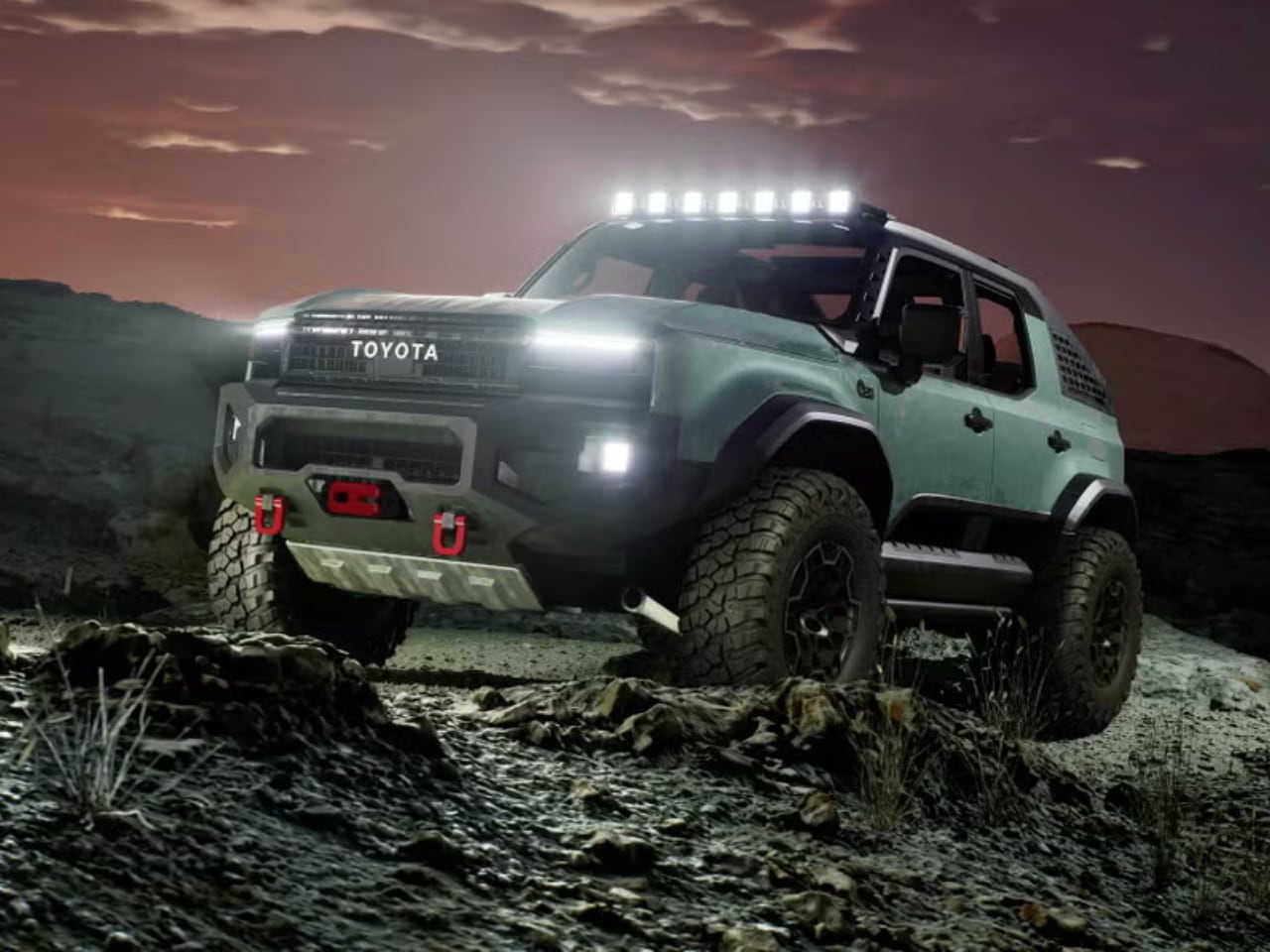Imagine standing at a canyon’s edge while seated in a vehicle. That’s the essence of Toyota’s Land Cruiser ROX concept. With no glass around you, the ROX feels like a hike on wheels. The only thing separating your arm from a trail branch is a skeletal line of steel. This wasn’t styled to impress auto show crowds but designed to expose.
Designer: Toyota Calty Design Research Studio
Toyota’s Calty Design Research studio approached the legendary Land Cruiser with a scalpel. They surgically removed everything that separated occupants from the world. The C-pillar was halved, the D-pillar eliminated, and the doors reduced to essential structural elements. What remains challenges our understanding of what defines a vehicle’s boundaries.
The design speaks through absence rather than addition. While most concepts pile on styling elements, the ROX achieves its identity through what’s been taken away. Air flows uninterrupted, light plays across surfaces without distortion, and sound arrives unfiltered. These sensory elements become active design components.
“We approached this project by asking what truly matters in an outdoor adventure,” explains Kevin Hunter, president of Calty Design Research. The ROX isn’t about conquering nature through isolation but immersion through thoughtful subtraction.
The Art of Taking Away
The skeleton doors protect without isolation. The negative space between frame members becomes a design element in its own right, creating a visual rhythm throughout the vehicle. A sliding canvas roof replaces conventional metal and glass. When retracted, it disappears completely; when deployed, it creates a play of filtered light that changes throughout the day.
Earth tones dominate the color palette, with materials that weather naturally. Unlike the typical matte-black tactical aesthetic of overlanding vehicles, the ROX embraces warm finishes that complement outdoor settings.
The functional mid-gate dissolves the boundary between the passenger compartment and the cargo area. By allowing the interior to function as a seamless environment, the designers have created a more authentic relationship between the vehicle and its purpose.
When Air Becomes the Interface
Seating surfaces feature weather-resistant fabrics inspired by technical outdoor gear, designed to develop character through use. Floor surfaces utilize a rubberized material that can be hosed down after muddy adventures, while controls are intended for use with wet or gloved hands.
“We considered how materials would age with use,” notes one Calty designer. This approach represents a departure from the automotive industry’s emphasis on perpetual newness. The ROX is designed to improve with use, developing a patina that records your adventures.
The structural elements frame moments. The reinforced roll cage isn’t hidden but celebrated as a design element. Standing 4 inches taller than the standard Land Cruiser and with an 8-inch wider track, the ROX creates a distinct relationship between the occupant and the ground plane. The elevated position combined with the absence of surrounding glass creates a sensation more akin to standing in a landscape than sitting in a vehicle.
The windshield remains as the sole glass panel, offering a single defined forward perspective with unlimited peripheral awareness. It becomes less a window and more a lens through which to view what’s ahead.
The Porch, Not the Tailgate
Drop the tailgate and you’re seated on molded curves that feel like bench rocks warmed by the sun. It’s not a tailgate. It’s a porch. From this vantage point, the ROX stops being a vehicle and becomes a shelter, shaped for stargazing or brewing camp coffee. This transformation represents the concept’s most profound achievement.
The emotional impact comes from honesty. There’s no pretense of luxury through isolation, no attempt to shield occupants from reality. Instead, the design acknowledges that connection to the environment is itself a luxury increasingly rare in modern life.
Without the cocoon-like isolation of conventional vehicles, you become more aware of environmental changes. This heightened awareness creates a different temporal engagement, where the journey becomes as richly detailed as the destination.
Practical functionality underpins the concept. The bed area with its spray-in liner acknowledges that adventure is often messy. Integrated tie-down points demonstrate an understanding of how gear needs to be secured. The iForce 2.4L turbocharged engine, with 278 horsepower, is selected for its accessible torque curve, which provides controllable power in technical off-road situations.
Storage solutions reflect how people actually organize gear during adventures. The designers created purpose-specific spaces rather than large, undifferentiated compartments. Most telling is the absence of unnecessary technology. The ROX includes only what serves its core purpose.
Exposure as the Experience
The Land Cruiser ROX concept shows how design can reconnect us with our surroundings rather than isolate us from them. In an era where automotive design increasingly emphasizes digital cocoons, the ROX stands as a counterargument for presence and immersion.
The most revolutionary aspect isn’t any single feature but the holistic vision of a vehicle designed to enhance connections rather than replace them. It represents a return to the original purpose of vehicles: to expand human capabilities rather than to isolate humans from reality.
The core insight, that sometimes the most powerful design move is to remove barriers rather than add features, has applications far beyond the automotive sector. The ROX may never hit production in this exact form, but that’s not the point. It’s a reminder that adventure isn’t about gear. It’s about exposure. And design like this makes exposure irresistible.
The post TOYOTA ROX: WHEN DESIGNERS REMOVE WALLS BETWEEN ADVENTURE AND MACHINE first appeared on Yanko Design.

